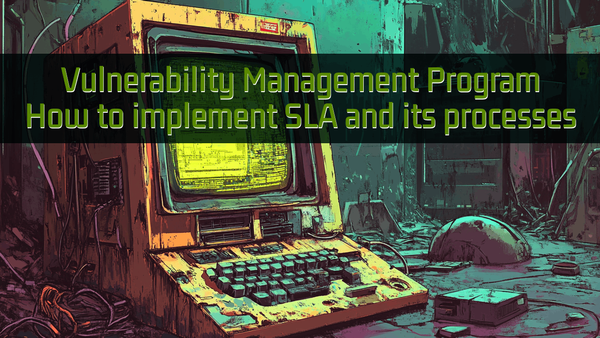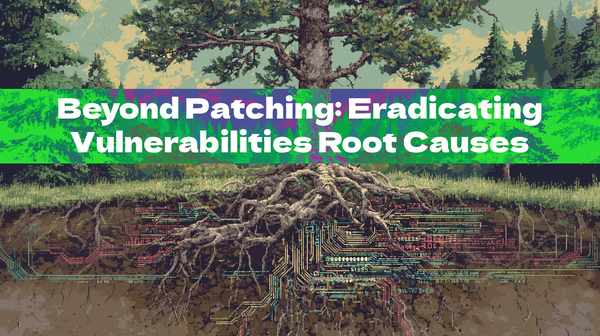🧭 TTDO: The Security Metric That Actually Measures Accountability
Time-to-Developer Ownership (TTDO) might be the most overlooked and game-changing metric in vulnerability management today. What is it? Why should you care?

For a second article about Vulnerability Management, let's move into a specific metrics and not an easy one to do, but definitely one you need to improve your SLA and overall security posture.
Time-to-Developer Ownership (TTDO) might be the most overlooked and game-changing metric in vulnerability management today.
What is it? TTDO measures the time between when a vulnerability is detected and when the right developer acknowledges and takes ownership of it.
Why should you care? Because without ownership, there's no fix. And without a fix, all your scanning, dashboards, and risk reports mean nothing.
Subscribe to Security Autopsy
⚠️ Why It’s Hard in Real Life
Let’s be honest — TTDO sounds great on paper. But in large (and sometimes smaller) orgs, it's a mess!
🧱 Who owns this code? This service? This asset? Good luck answering that without a live and maintained inventory of systems, applications and owners — most orgs still sadly don’t have this nailed down.
📦 Monoliths. Microservices. Shadow IT. Cloud drift. You can’t route security issues if you don’t know who to ping. You'll eventually. succeed, but it will waste many hours, or days and burn through your SLA before you even have someone assigned to the remediation work.
🔧 TTDO ≠ Just Metrics — It’s Ops, Culture, and Tools
To make TTDO work, you need more than dashboards:
- A living asset & ownership catalog → Know who owns what, across cloud, on-prem, and code. The catalog is maintained to represent the actual ownerships of all assets, applications, repositories and more.
- Clear SLAs for vulnerability acknowledgment → Set expectations for devs: acknowledge fast, fix smart. From Critical to Low severity vulnerability you need a clear and defined SLA.
- A fair process for risk acceptance & extension → Not all vulns are equal. Some require system-wide refactors. Your SLA must allow time extensions and business-aligned exceptions. Yes some critical vulnerabilities can take weeks to fix, remember Log4J ?!?
- Automation that alerts in the right place → Not buried in a security platform no one checks or not forcing another platform to login for developers - they already have enough of those. Ping the devs where they live (Slack, Jira, GitHub).
✅ Why It Works
Organizations that nail TTDO see:
- Shorter TTR (Time to Remediate)
- Higher developer trust in AppSec
- A culture of real ownership, not just ticket shuffling
DevSecOps leaders at companies emphasize context-rich ownership and SLA-based triage — not just "patch it now" pressure — which you should not do anyway!
🔥 TL;DR
🚨 If you’re measuring TTR but not TTDO, you’re missing the first half of the battle.
TTDO is your signal for:
- Is the vulnerability going to the right owner?
- Is it being looked at in time? (TTDO SLA)
- Do we have enough visibility and process to track it? (Jira or else)
- Optional : One TTDO per asset type
👀 Without ownership, there is no security. Let’s fix that.
Are you tracking TTDO yet? How are you building ownership catalogs in your org? Let’s share battle scars and solutions.
#AppSec #DevSecOps #SecurityMetrics #VulnerabilityManagement #DeveloperExperience #ShiftLeft #ProductSecurity
See the other article in the series:
- Article 1 - 🔥 Let’s start talking about vulnerability management.





